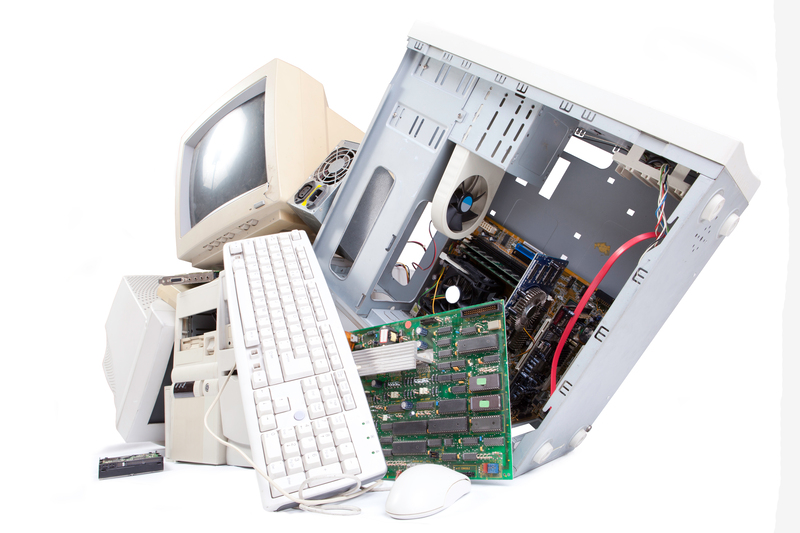Waste Less, Save More: Your Guide to Bulky Item Cost Savings
Looking for ways to save money while getting rid of large, unwanted items responsibly? You're not alone. Whether it's an old couch, a broken refrigerator, or outdated furniture, disposing of bulky items can be confusing and costly without the right guidance. This comprehensive guide reveals how to waste less and save more by managing bulky waste efficiently. Discover cost-effective, eco-friendly options and tips that help you maximize savings while minimizing your impact on our planet.
Understanding Bulky Waste
Before diving into the best strategies for bulky waste cost savings, it's essential to know what qualifies as a bulky item. Bulky waste typically refers to large items that do not fit into regular trash bins. Common examples include:
- Sofas, couches, and armchairs
- Mattresses, beds, and box springs
- Household appliances (refrigerators, washing machines, dryers)
- Large tables, desks, and wardrobes
- Garden furniture and tools
- Carpets and rugs
- Playground equipment
These items often require special handling and can incur significant disposal fees if not managed properly.

Why Bulky Item Disposal Costs Add Up
Disposing of bulky waste can be more expensive than you might think. Here's why:
- Special collection fees: Municipalities or private haulers may charge extra for curbside pickups or scheduled collections of large items.
- Landfill and tipping fees: Charges for bulky waste in landfill sites are often higher due to the space they occupy and the handling required.
- Transportation costs: If you rent a truck or hire a service, transportation fees can add up quickly.
- Environmental regulations: Improper disposal can result in fines, especially for items containing hazardous materials like refrigerators or electronics.
Typical Disposal Scenarios
Imagine trying to get rid of an old sectional sofa. If your regular waste service doesn't accept it, you may be looking at paying $50 to $100--or even more--just for a single item. The costs multiply if you have multiple items, leading many people to seek smarter, less expensive options.
Strategies to Waste Less and Save More
1. Reduce -- The First Step Toward Savings
The most effective way to save on bulky item removal is to avoid generating unnecessary waste in the first place. Embrace the "reduce" principle:
- Buy smart: Choose quality products that last longer, minimizing the need for frequent replacement.
- Avoid overconsumption: Before making a purchase, consider whether you truly need the item.
- Choose modular items: Opt for furniture or appliances that can be easily repaired or upgraded, reducing the need for whole-item disposal.
2. Reuse and Repurpose Bulky Items
You may be surprised by how easy it is to breathe new life into bulky items. Instead of throwing them away, consider:
- Donating: Many charities, thrift stores, and shelters will accept gently used furniture and appliances. Some even offer free pickups.
- Selling: Use online marketplaces (Facebook Marketplace, Craigslist, eBay, or OfferUp) to sell items; sometimes, you might even make a profit.
- Repurposing: Turn an old door into a desk, or use wooden pallets for DIY projects. Creative repurposing saves money on both disposal and new purchases.
- Giving away: Nextdoor, Buy Nothing groups, and community freecycle networks are great resources for passing along items at no cost.
3. Recycle Responsibly
Many bulky items are made from recyclable materials. Check your local government's website to learn about available recycling services:
- Metal recycling: Appliances, bed frames, and fixtures may be accepted by scrap metal recyclers, sometimes earning you a small payout.
- Mattress recycling: Specialized facilities safely dismantle and recycle mattress components such as metal springs, foam, and fabric.
- Electronics and e-waste: Televisions, computers, and appliances often require special handling. Many businesses and municipalities offer scheduled collections for these items.
Recycling not only prevents bulky items from ending up in a landfill, but can also save you from paying landfill fees and fines.
How to Save Money on Bulky Waste Disposal
1. Schedule Free or Discounted Pickup Services
Many cities and private waste haulers offer periodic bulky waste collections as part of your regular service. Tips for maximizing your savings:
- Check your local program: Search city or county websites for free pickup schedules and eligibility guidelines.
- Plan ahead: Bulk pickup days often fill up quickly. Reserve your spot or schedule early.
- Maximize your allotment: Most programs limit the number of items or total weight per pickup. Consolidate as much as possible to avoid paying for extra loads.
2. Pool With Neighbors for Group Savings
Many disposal services offer better rates for larger collections. Coordinate with neighbors to:
- Rent a dumpster together and split the cost
- Hire one removal service for the whole block
- Take advantage of load-based pricing at local transfer stations
This cooperative approach can significantly reduce per-item costs and build stronger community ties.
3. Transport Bulky Items Yourself
If you own a truck or can borrow one, self-hauling is often cheaper than professional service. Keep costs low by:
- Bundling multiple items per trip
- Confirming landfill or recycling center fees prior to loading up
- Verifying open hours and accepted items to avoid wasted trips
4. Look for Special Collection Events
City "clean-up days," appliance recycling drives, and mattress collection events often offer free or subsidized disposal for residents. These are especially common around spring and fall. Track community calendars and take advantage of these opportunities to save money on bulky waste disposal.
5. Utilize Manufacturer or Retail Take-Back Programs
Many appliance retailers, mattress companies, and electronics brands offer free removal of your old item with the purchase of a new one. Always ask about take-back or trade-in options when replacing large household products.
Eco-Friendly Bulky Item Disposal: Save Money & the Planet
Choosing sustainable options not only helps you save money on bulky waste removal, but also reduces your carbon footprint:
- Donate whenever possible: Charitable giving extends the life of your items and supports social programs.
- Recycle responsibly: Prevents materials from rotting in landfills or harming the environment.
- Buy secondhand: Purchasing used items yourself helps keep bulky waste from entering the waste stream.
By prioritizing reuse and recycling, you'll be investing in a greener future while minimizing disposal costs.
Where to Donate or Recycle Bulky Items
- Goodwill and Salvation Army: Accept most furniture and small appliances.
- Habitat for Humanity ReStores: Welcome building materials, furniture, and working appliances.
- Metal scrap yards: Take metal bed frames, appliances, and bikes--call ahead for current rates and accepted items.
- Electronics retailers: Chains like Best Buy offer recycling programs for electronics and select appliances.
Hidden Costs of Improper Bulky Waste Disposal
Getting rid of bulky items the wrong way can backfire financially and legally. Here are the risks:
- Illegal dumping fines: Many cities levy hefty penalties for leaving items on public property or unauthorized locations.
- Damage to local environment: Hazardous materials can leak from old appliances, contaminating soil and water.
- Reduced property value: Unsightly junk can lower neighborhood appeal and home values.
Avoid these costly outcomes by following proper disposal guidelines and using legitimate services.

Frequently Asked Questions about Bulky Item Cost Savings
Q: How can I get rid of bulky waste for free?
A: Take advantage of free city curbside collections, donate to charities, give away on community platforms, or participate in local recycling events. Always check for eligibility and scheduled dates.
Q: What is the cheapest way to dispose of an old mattress?
A: Many cities and charities collect mattresses for free. Alternatively, contact recycling centers specializing in mattress breakdowns or use manufacturer take-back programs.
Q: Can I put bulky waste in a dumpster?
A: Only if permitted by your waste hauler and property owner. Some dumpsters restrict certain bulk items or require pre-approval. Always verify before loading large items.
Q: Are there any restrictions on what counts as 'bulky waste'?
A: Yes, hazardous items (like chemicals and batteries), automotive parts, and construction debris are usually excluded. Consult your local guidelines for specific restrictions.
Conclusion: Waste Less, Save More with Smart Bulky Waste Practices
Bulky item disposal doesn't have to empty your wallet or harm the environment. By understanding your options and taking proactive steps--such as reducing consumption, reusing, responsibly recycling, and utilizing community services--you can make every bulky item count.
Remember: Waste less and save more with the right strategies. Not only will you keep more money in your pocket, but you'll also make a positive impact on your community and the planet. Start applying these tips today and discover how simple cost savings on bulky waste disposal can be!